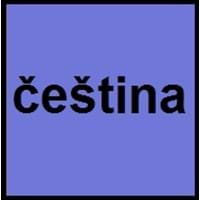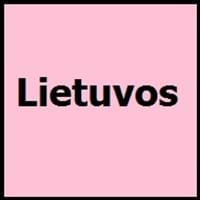Czech and Lithuanian
Countries
Czech Republic, European Union
European Union, Lithuania
National Language
Czech Republic
Lithuania
Second Language
Not spoken in any of the countries
Not spoken in any of the countries
Speaking Continents
Europe
Europe
Minority Language
Austria, Croatia, Germany, Slovakia
Poland
Regulated By
Institute of the Czech Language
Commission of the Lithuanian Language
Interesting Facts
- The Czech language was known as Bohemian as early at 19th century.
- In czech language, there are many words that do not contain vowels.
- Lithuanian has many loanwords that originate from Slavic, Germanic and other Baltic languages.
- "Catheciusmus" is the oldest known book in Lithuanian language in 1547.
Similar To
Polish, Slovak and Sorbian
Latvian
Derived From
Not Available
Not Available
Alphabets in
Czech-Alphabets.jpg#200
Lithuanian-Alpahbets.jpg#200
Writing Direction
Left-To-Right, Horizontal
Left-To-Right, Horizontal
How Are You?
Jak se máš?
Kaip sekasi?
Good Night
dobrou noc
Labanakt
Good Evening
dobrý večer
Labas vakaras
Good Afternoon
dobré odpoledne
Laba diena
Good Morning
dobré ráno
Labas rytas
I Love You
Miluji tě
Aš myliu tave
Excuse Me
promiňte
Atsiprašau
Dialect 1
Chod
Samogitian
Where They Speak
Chodsko, Bohemia
Lithuania
How Many People Speak
Not Available
Dialect 2
Lach
Aukštaitian
Where They Speak
Czech Silesia, Hlucin, Northeast Moravia
Lithuania
Dialect 3
Moravian
Curonian
Where They Speak
Czech Republic, Czech Silesia, Moravia, Slovakia
Lithuania
How Many People Speak
Not Available
Speaking Population
Not Available
Native Name
čeština / český jazyk
lietuvių kalba
Alternative Names
Bohemian, Cestina
Lietuvi, Lietuviskai, Litauische, Litewski, Litovskiy
French Name
tchèque
lituanien
German Name
Tschechisch
Litauisch
Pronunciation
Not Available
Not Available
Ethnicity
Czechs
Lithuanians
Origin
9th Century
c. 1503
Language Family
Indo-European Family
Indo-European Family
Subgroup
Slavic
Not Available
Early Forms
Proto-Czech, Old Czech
No early forms
Standard Forms
Standard Czech
Lithuanian
Language Position
Not Available
Signed Forms
Czech Sign Language
Lithuanian Sign Language
Scope
Individual
Individual
ISO 639 6
Not Available
Not Available
Glottocode
czec1258
lith1251
Linguasphere
53-AAA-da
54-AAA-a
Language Type
Living
Living
Language Linguistic Typology
Not Available
Not Available
Language Morphological Typology
Fusional, Synthetic
Synthetic
All Czech and Lithuanian Dialects
Most languages have dialects where each dialect differ from other dialect with respect to grammar and vocabulary. Here you will get to know all Czech and Lithuanian dialects. Various dialects of Czech and Lithuanian language differ in their pronunciations and words. Dialects of Czech are spoken in different Czech Speaking Countries whereas Lithuanian Dialects are spoken in different Lithuanian speaking countries. Also the number of people speaking Czech vs Lithuanian Dialects varies from few thousands to many millions. Some of the Czech dialects include: Chod, Lach. Lithuanian dialects include: Samogitian , Aukštaitian. Also learn about dialects in South American Languages and North American Languages.
Czech and Lithuanian Speaking population
Czech and Lithuanian speaking population is one of the factors based on which Czech and Lithuanian languages can be compared. The total count of Czech and Lithuanian Speaking population in percentage is also given. The percentage of people speaking Czech language is 0.15 % whereas the percentage of people speaking Lithuanian language is Not Available. When we compare the speaking population of any two languages we get to know which of two languages is more popular. Find more details about how many people speak Czech and Lithuanian on Czech vs Lithuanian where you will get native speakers, speaking population in percentage and native names.
Czech and Lithuanian Language Codes
Czech and Lithuanian language codes are used in those applications where using language names are tedious. Czech and Lithuanian Language Codes include all the international language codes, glottocodes and linguasphere.





